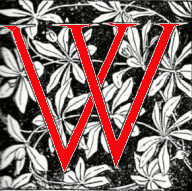
ilkie is in his department not only the first painter of our times, but, together with Hogarth, the most spirited and original master of the whole English school. In the most essential particulars, Wilkie has the same style of art as Hogarth. With him he has great variety, refinement, and acuteness in the observation of what is characteristic in nature; and in many of his pictures the subject is strikingly dramatic. Yet in many respects he is different from him; he does not, like Hogarth, exhibit to us moral dramas in whole series of pictures, but contents himself with representing, more in the manner of a novel, one single striking scene. His turn of mind is besides very different. If I might compare Hogarth with Swift, in his biting satire, with which he contemplates mankind only on the dark side, and takes special delight in representing them in a state of the most profound corruption, of the most frightful misery, I find in Wilkie a close affinity with his celebrated countryman, Sir Walter Scott. Both have in common that genuine, refined delineation of character which extends to the minutest particulars. In the soul of both there is more love than contempt of man; both afford us the most soothing views of the quiet, genial happiness which is sometimes found in the narrow circle of domestic life, and understand how, with masterly skill, by the mixture of delicate traits of good-natured humour, to heighten the charm of such scenes; and if, as poets should be able to do both in language and colours, they show us man in his manifold weaknesses, errors, afflictions, and distresses, yet their humour is of such a kind that it never revolts our feelings. Wilkie is especially to be commended, that in such scenes as the Distress for Rent, he never falls into caricature, as has often happened to Hogarth, but with all the energy of expression remains within the bounds of truth. It is affirmed that the deeply impressive and touching character of this picture caused an extraordinary sensation in England when it first appeared. Here we first learn duly to prize another feature of his pictures, namely, their genuine national character. They are in all their parts the most spirited, animated, and faithful representations of the peculiarities and modes of life of the English.
In many other respects Wilkie reminds me of the great Dutch painters of common life of the seventeenth century, and likewise in the choice of many subjects, for instance, the Blind Man's Buff; but particularly by the careful and complete making out of the details, in which he is one of the rare exceptions among his country men. If he does not go so far in this respect as Douw and Franz Mieris, he is nearly on an equality with the more carefully executed paintings of Teniers and Jan Steen. His touch, too, often approaches the former in spirit and freedom, especially in his earlier pictures. One of them, the Blind Fiddler, is in the gallery. You know this admirable composition from the masterly engraving by Burnet. The effect of the colouring colouring is by no means brilliant, yet the tone of the flesh is warm and clear. The colours, which, as in Hogarth, are very much broken, have a very harmonious effect, the light and shade being very soft, and carried through with great skill. From the predominance of dead colours, the whole has much the appearance of distemper. As well in the above respects as in the naïveté and close observation of nature, and the good-natured humour of the subject, this picture is a real master piece, which deserves the more admiration since we find, by the date affixed, that it was painted in 1806, when Wilkie was not more than twenty-one years of age.”—pp. 239-41. [142-43]
Related material
Bibliography
[Review of Waagen]. Quarterly Review 62 (1838): 131-61.
Waagen, G. F. Works of Art and Artists in England. 3 vols. London, 1838.
Last modified 28 November 2019